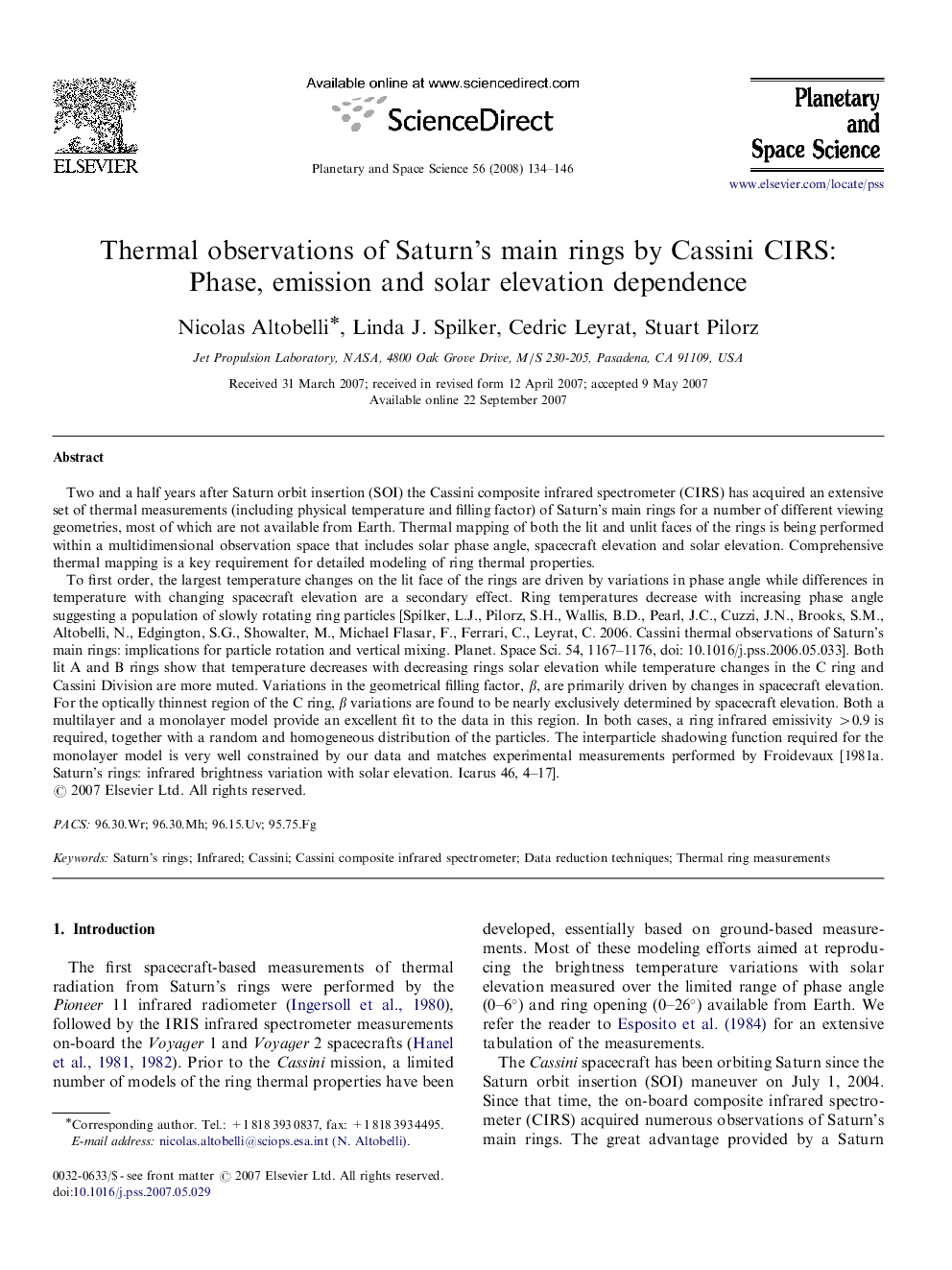| Article ID | Journal | Published Year | Pages | File Type |
|---|---|---|---|---|
| 1782439 | Planetary and Space Science | 2008 | 13 Pages |
Abstract
To first order, the largest temperature changes on the lit face of the rings are driven by variations in phase angle while differences in temperature with changing spacecraft elevation are a secondary effect. Ring temperatures decrease with increasing phase angle suggesting a population of slowly rotating ring particles [Spilker, L.J., Pilorz, S.H., Wallis, B.D., Pearl, J.C., Cuzzi, J.N., Brooks, S.M., Altobelli, N., Edgington, S.G., Showalter, M., Michael Flasar, F., Ferrari, C., Leyrat, C. 2006. Cassini thermal observations of Saturn's main rings: implications for particle rotation and vertical mixing. Planet. Space Sci. 54, 1167-1176, doi: 10.1016/j.pss.2006.05.033]. Both lit A and B rings show that temperature decreases with decreasing rings solar elevation while temperature changes in the C ring and Cassini Division are more muted. Variations in the geometrical filling factor, β, are primarily driven by changes in spacecraft elevation. For the optically thinnest region of the C ring, β variations are found to be nearly exclusively determined by spacecraft elevation. Both a multilayer and a monolayer model provide an excellent fit to the data in this region. In both cases, a ring infrared emissivity >0.9 is required, together with a random and homogeneous distribution of the particles. The interparticle shadowing function required for the monolayer model is very well constrained by our data and matches experimental measurements performed by Froidevaux [1981a. Saturn's rings: infrared brightness variation with solar elevation. Icarus 46, 4-17].
Related Topics
Physical Sciences and Engineering
Earth and Planetary Sciences
Geophysics
Authors
Nicolas Altobelli, Linda J. Spilker, Cedric Leyrat, Stuart Pilorz,
